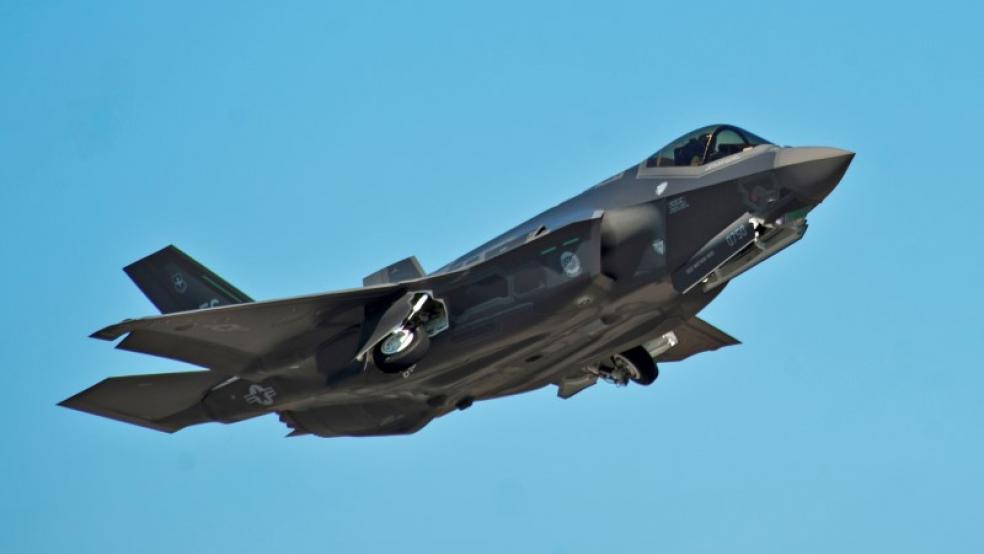The United States signed off Wednesday on a record $38 billion, 10-year military assistance pact with Israel that has major implications for the troubled F-35 Joint Strike Fighter program.
Since 2006, the Israeli Air Force has publicly embraced a version of the Lockheed Martin F-35 as a crucial part of a long-term effort to modernize its air power and replace its roughly 300 aging F-16s. Israel, the United States’ closest ally in the Middle East, has unrivaled air power in that region but can’t risk losing its edge in the face of threats from Iran and other hostile nations.
Related: After Years of Bad News, the F-35 Proves a Double Threat from the Sky
The Israeli Air Force announced in late July that a customized F-35i “Adir” fighter jet had been flown successfully in the U.S., and that the first of 75 F-35s would be delivered to Israel in December, assuming follow-up tests went well.
But like other U.S. allies committed to purchase variants of the F-35, Israel is suffering from sticker shock. While the cost of the initial 100-plane deal in 2006 was pegged at $5 billion, or $50 million per aircraft, the price tag has ballooned to as high as $15 billion – or about $200 million per plane, according to Defense Industry Daily. Other estimates put the per unit cost closer to $100 million, but the price is a moving target and highly sensitive to how many planes are ultimately ordered and built.
Israel at one point considered delaying its purchase and turning to other options, according to the report, but ultimately decided to become the first foreign buyer of operational F-35s.
Thanks to the new military aid pact – negotiated despite growing tensions between the Obama administration and Israeli Prime Minister Benjamin Netanyahu – Israel for the time being will be the only country in the Middle East to fly the F-35.
Related: Here's Why the F-35 Will Lose a Dogfight With the Russian Su-35
“This will retain the Israeli Air Force’s strategic dominance in the Middle East, there’s no question,” said Gordon Adams, a military expert and historian. “The one area where the Israelis have not done terribly well in providing their own equipment is fighter aircraft.”
“They just can’t sustain a domestic fighter industry building their own fighters, so they have been reliant on buying U.S. fighters for a long time,” he added.
The newly approved, decade-long $38 billion military assistance program effectively is a massive U.S. subsidy to Israel to purchase jet fighters and other military equipment from U.S. defense manufacturers. One way of looking at the agreement is to consider it a multi-billion-dollar gift certificate to Israel to shop among major U.S. defense contractors for new hardware.
The new agreement -- providing roughly $3.8 billion annually for the next decade – provides a $700 million annual increase over the previous pact. It includes $33 billion in foreign military financing and $5 billion in missile defense assistance. Much of the increase is earmarked for the Iron Dome defense system that until now has been funded separately by the Department of Defense.
Related: Record US Military Aid Deal for Israel
While the deal is relatively generous, some critics complain that it doesn’t keep up with inflation and the astronomical cost of new weapon systems. And the U.S. was able to extract several important concessions from Netanyahu’s government.
For instance, although Israel until now has been able to use a portion of the assistance to purchase domestically-produced weaponry, the new agreement gradually phases out the amount of aid that Israel can purchase from its own defense industry, according to The Washington Post.
“So over time, all of the dollars will have to be spent” on U.S. manufactured weapons, Adams said.
Moreover, the agreement prevents Israel from directly lobbying Congress for additional aid, unless Israel is at war. And the agreement puts an end to U.S. aid to the Israeli military to purchase fuel – a big ticket item.
Related: Under New Management? The $1 Trillion F-35 Is Overdue for a Change
The F-35 program – projected to cost as much as $1.5 trillion over the coming decades -- has been beset by cost overruns and development problems for years. The Pentagon’s F-35 program office has been working with Lockheed Martin, the prime contractor, to find ways to drive down the current cost of more than $100 million per unit to around $85 million by 2019, according to Reuters. One of the most important factors in cost containment is foreign sales, with Israel playing a key role in keeping the program moving forward and putting downward pressure on prices.





